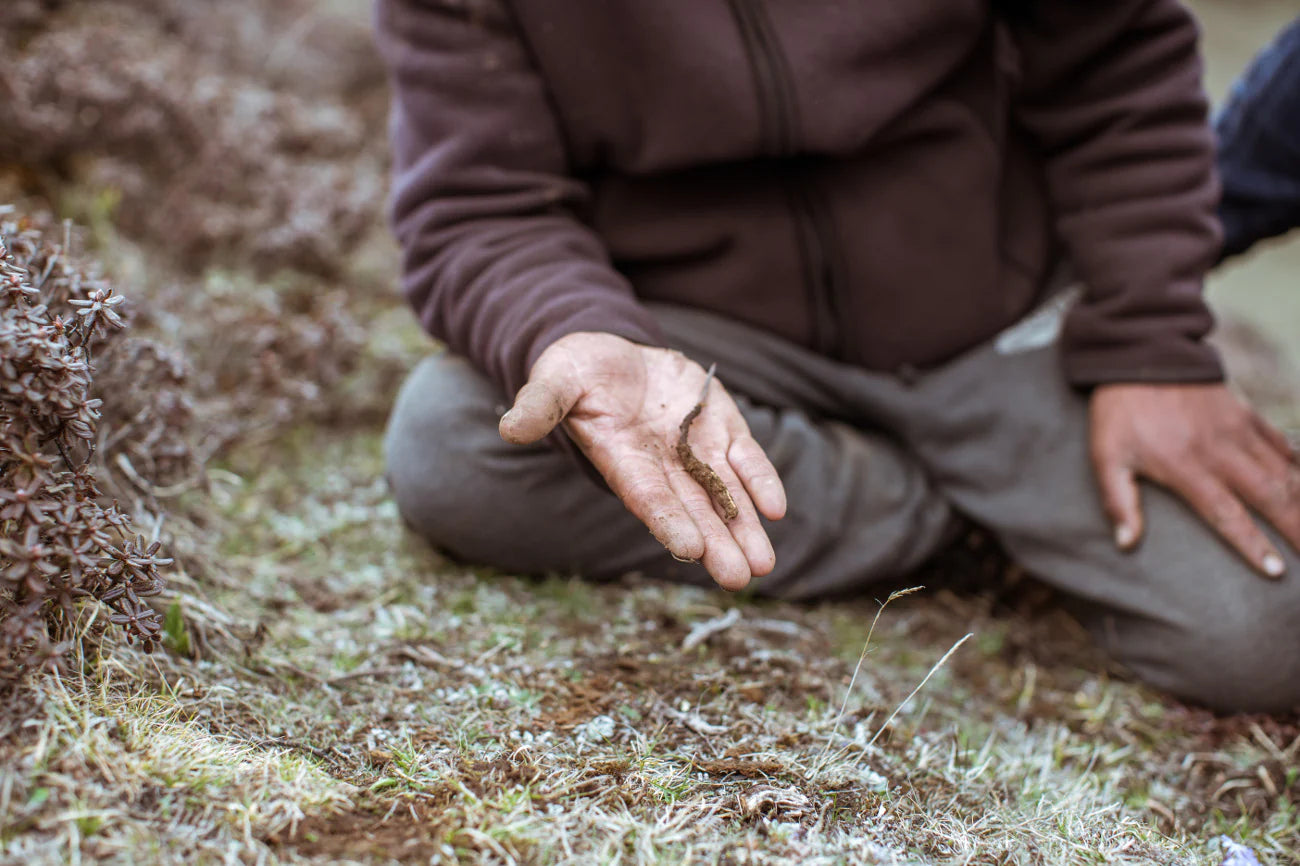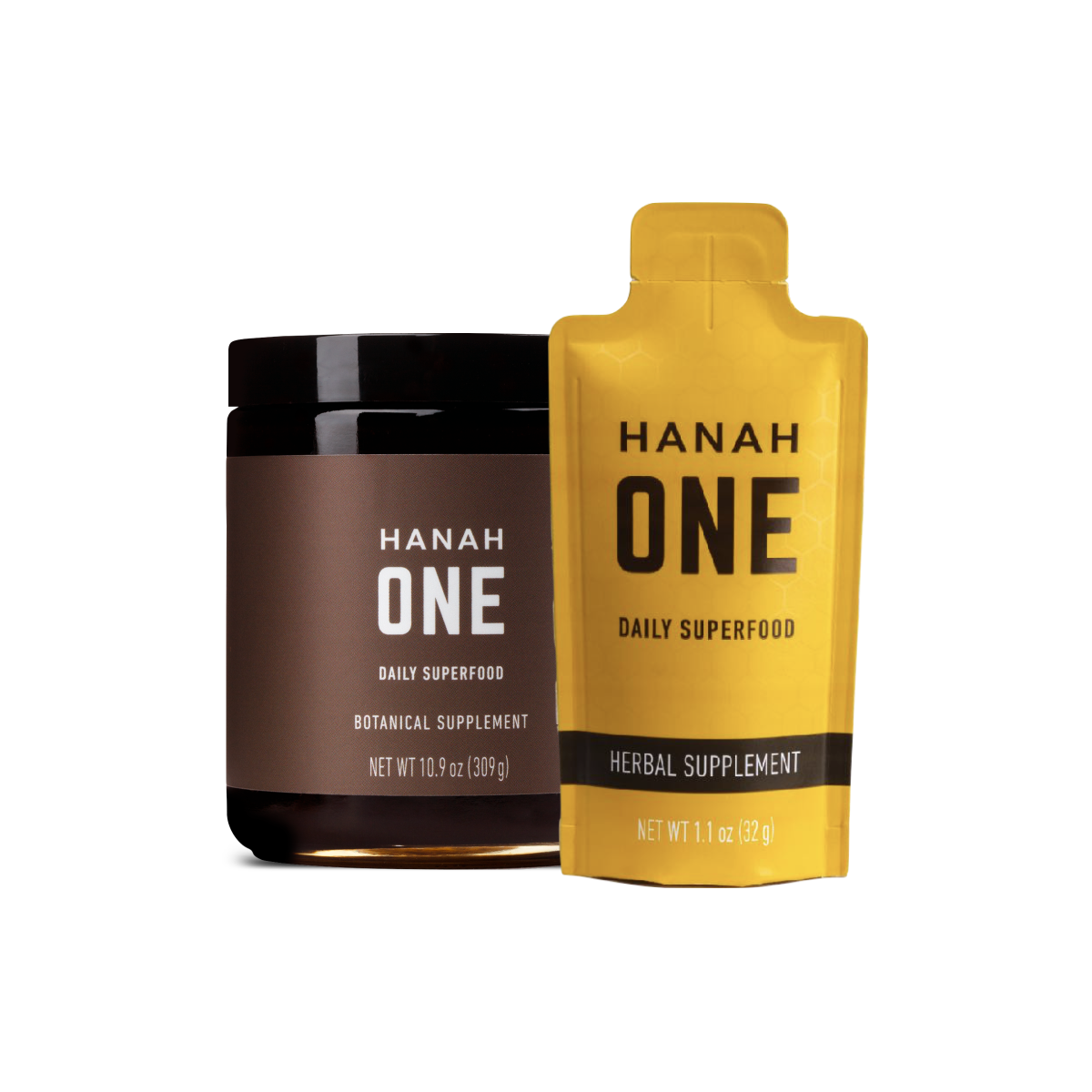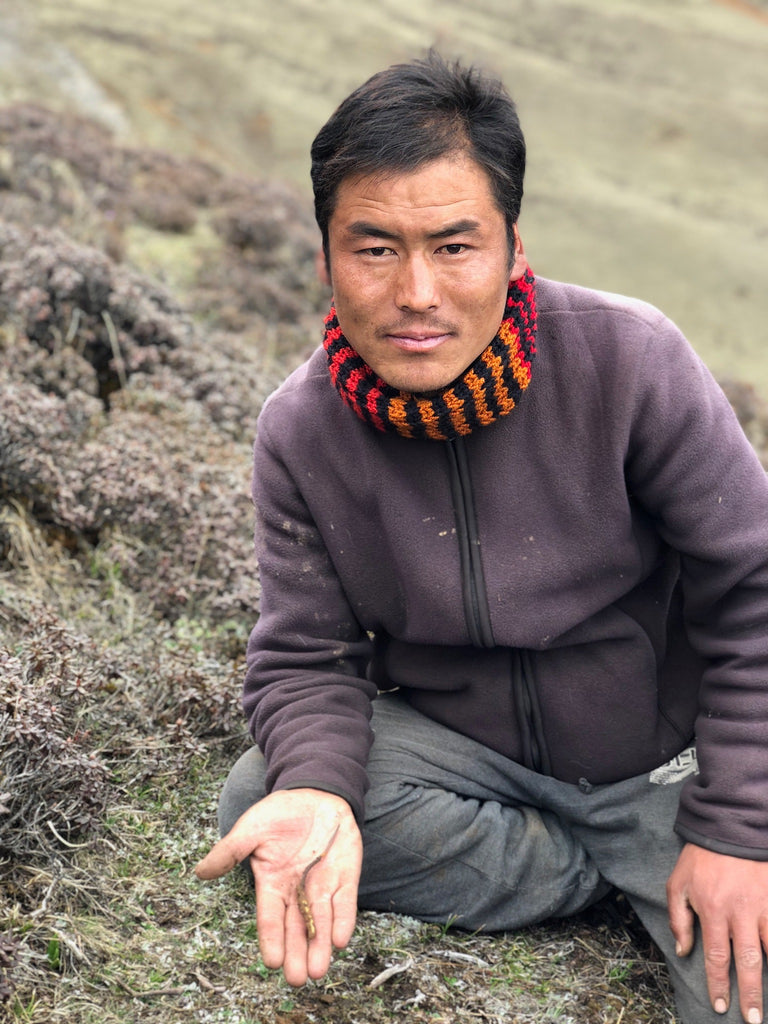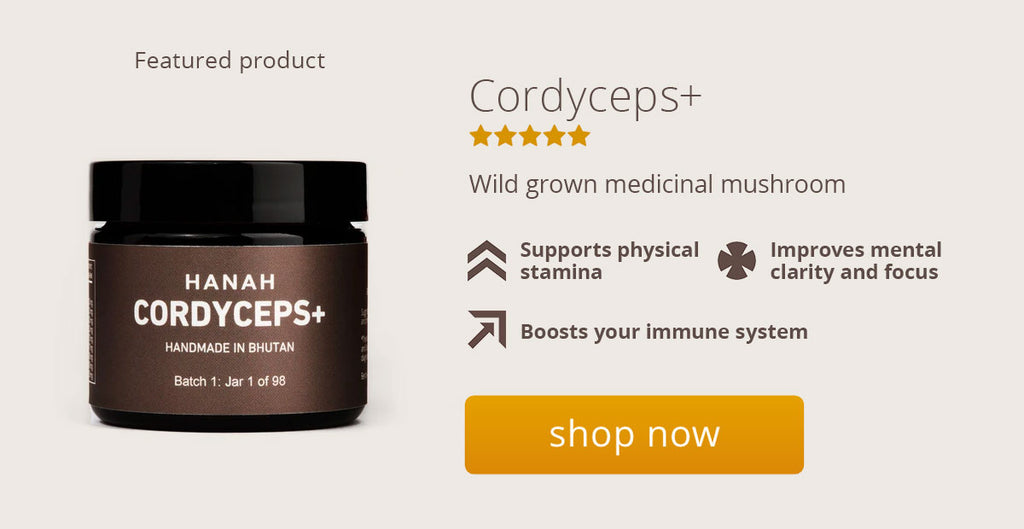The great Cordyceps swindle: The hidden truth lurking in your “mushroom” tea, powder and capsules

Not all ingredients are created equal:
Part 3 of the HANAH Series that takes a hard look at the food supplement industry and what we put in our bodies
You may have noticed that mushrooms have been having a moment. For the longest time, the only people who gave a fudge about fungi were chefs who utilized them in recipes for their taste and texture and Traditional Chinese Medicine practitioners. But now the word is well and truly out on the health benefits mushrooms can provide, and their appeal has outgrown the produce aisle, extending to a dizzying array of teas, powders, capsules, and more that are given an increasing amount of shelf space.
One of the most powerful types of fungi is Cordyceps sinensis, a highly sought after Himalayan medicinal mushroom. In Bhutan, Tibet and Nepal, indigenous peoples have witnessed the curative power of Cordyceps first-hand for generations, and centuries-old Traditional Chinese Medicine texts like the Ben Cao Cong Xin praise the fungus’s innumerable abilities to ward off common colds, combat back pain, suppress coughs, sharpen the senses and more. Yet as we’re so fixated on hard evidence in the West, scientists have started putting Cordyceps under the microscope to examine it at the molecular level.
Isolating and extracting certain properties is useful, as it can enable researchers to further their laboratory-based findings on the health properties of this potent fungus. For example, one study found that H1-A sterols from Cordyceps may aid in the treatment of lupus and other autoimmune diseases, a second discovered that the fungus’s polysaccharides might inhibit the growth of cancerous cells, and a third identified its powerful anti-inflammatory elements. Further studies summarized in a Science Direct meta-analysis noted the potential for Cordyceps to enhance cellular function, deliver antidiabetic effects, and enhance lung health.
Despite the usefulness of turning to laboratories to study Cordyceps’s pharmacological uses, an increasing number of companies have started taking lab experiments in a new and more dubious direction. Eastern cultures have long prized the health-promoting potential of this fungus and as the rest of the world moved from a mushroom fad into a sustained interest in consuming fungi to increase vitality, demand for Cordyceps has skyrocketed. However, the labor-intensive nature of finding and harvesting it and reduced supply due to climate change impacting the growing regions of Bhutan, Nepal and Tibet have sent the price soaring to around $10,000 per pound. It’s no coincidence that the Chinese sometimes refer to Cordyceps as “soft gold.”
Cordyceps sinensis vs. militaris
Scarcity and sky-high prices prompted companies eager to jump on the Cordyceps bandwagon to synthetically produce a lab-grown variation. This is different enough from the wild variety to receive its own Latin name, Cordyceps militaris. Whereas the naturally grown Cordyceps sinensis is a single, root-like structure consisting of dark brown fruiting spores and white tendrils known as mycelium, the artificial one is just white or yellow mycelium. It’s not just the appearance that’s different, but also the chemical makeup. The lab-grown variation is mostly cordycepin, while the wild one is primarily adenosine that has been shown to enhance athletic performance. This is comparable to the difference between farmed fish oil that has been concentrated artificially and higher quality products made from cold-pressed, wild-caught salmon. Yes, the levels of certain beneficial compounds have been amplified in a lab in the former, but in a way that could compromise bioavailability and efficacy.
Plants and fungi naturally contain supporting ingredients that might not be the All Stars of the nutritional show, but activate beneficial properties in the body in a way that lab-developed iterations or highly processed versions cannot. For example, companies that produce decaffeinated green tea can compromise the effectiveness of disease-fighting properties like catechins and theanine by removing the caffeine that aids in their delivery in the body. We should also consider the positive impact that the virgin Himalayan soil can have on wild Cordyceps. When manufactured in sterile conditions, Cordyceps is going to lose the potential benefits of some of the most nutrient-dense, mineral-rich terroir on earth.
Rather than just focusing on the end product of Cordyceps militaris, it’s also worth exploring the process that’s required to grow it. When a company decides to culture Cordyceps artificially, their aim is to create as much mycelium – and none of the fruit part of the fungus that’s so highly sought after in the Himalayas – as they can, as cheaply as possible. They sometimes utilize heavily toxic solvents during cultivation and in a rush to finish each batch, may fail to remove contaminated seeds indicated by oddly-sized fungus balls. Low quality production methods can also lead to Cordyceps being exposed to heavy metals, which in two cases resulted in lead poisoning.
Exposing germinating Cordyceps to light that’s too bright or for too long can reduce the amount of one of the key active compounds, cordycepic acid, according to one study. The researchers also found that total cultivation time could cause large variations in the quality of Cordyceps militaris. Lab-derived Cordyceps is often grown on sawdust, wood chips, compost or straw. These might be tainted with pesticides that could accumulate in the final product, and separating such bedding materials from the fungus is difficult. We’re going to guess that nobody wants to pay top dollar for a supplement purporting to be Cordyceps that’s actually part wood waste.
Rice fillers?
Yet what’s just as bad if not worse is the producers who aren’t even trying to divide their lab-manufactured mushrooms from the starches they’re grown on. A worryingly high number of companies, including some so-called premium brands, are sourcing their mushroom teas and powders this way, without disclosing it in their expensive marketing campaigns or on their packaging (not least because the lax rules on supplement purity mean they don’t have to). Once the mycelium grows out of the grain, both are usually dried and ground together.
While wild-harvested Cordyceps typically contains around 5% starch, the lab-created mycelium-on-grain (MOG) variation can have up to 65%. Manufacturers can use this high starch content to justify the elevated polysaccharide levels they sometimes put on the label. However, in the case of lab-cultured MOG, the polysaccharides are primarily inactive alpha glucan rather than the active beta-D-glucans naturally occurring in mushrooms, which have anti-cancer properties.
As one expert wrote on his blog, “Most Cordyceps supplements are mycelium grown on brown rice flour or a glutinous grain, so you will be buying more starch than medicinal components.” And while such companies will claim that their Cordyceps “extract” is proven to be potent by studies, in fact very little research has been conducted on grain-grown mycelium. Plus, MOG products typically contain a tiny amount of the compounds that are abundant in wild-harvested mushrooms.
So should you find a low-cost option, it’s worth taking a closer look at the company’s processing and supply chain methods. A Paleo FX post on medicinal mushrooms suggests that if the label includes any of the following terms, then the imitation Cordyceps sinensis is actually just low-grade mycelium grown on grain: full spectrum, made in the USA, mycelium, myceliated brown rice, mycelial biomass. If the product originated in China, it could well be CS-4, in which mycelium is grown in huge tanks containing water and soluble nutrients.
When it comes to Cordyceps supplements, if it seems too good to be true, it almost certainly is. Unless your mushroom tea, powder, or capsule provider can prove the same kind of purity, Himalayan sources, and wild-harvesting that we insist on in our Cordyceps+ blend, you’d be well advised to take your business elsewhere. Your health and your wallet deserve better.
Learn more about our series on Bhutan and Cordyceps
- Part 1: HANAH's hunt for Cordyceps sinensis in Bhutan
- Part 2: Supporting Bhutanese communities and sustainable Cordyceps sinensis harvesting
- Part 4: The mushroom gold rush – how to avoid a supplement swindle
- Part 5: The Athlete’s Ally: Adding Cordyceps to Your Performance + Recovery Toolkit
- Part 6: Need an athletic edge? Get a natural endurance and power boost with HANAH Cordyceps+
Check out our HANAH ONE & Cordyceps+ bundle
Subscribe and save up to 20% off these two powerful products. Learn more here.
Disclaimer
*Individual results may vary. This statement has not been evaluated by the Food and Drug Administration. This product is not intended to diagnose, treat, cure, or prevent any disease.











Leave a comment
This site is protected by hCaptcha and the hCaptcha Privacy Policy and Terms of Service apply.